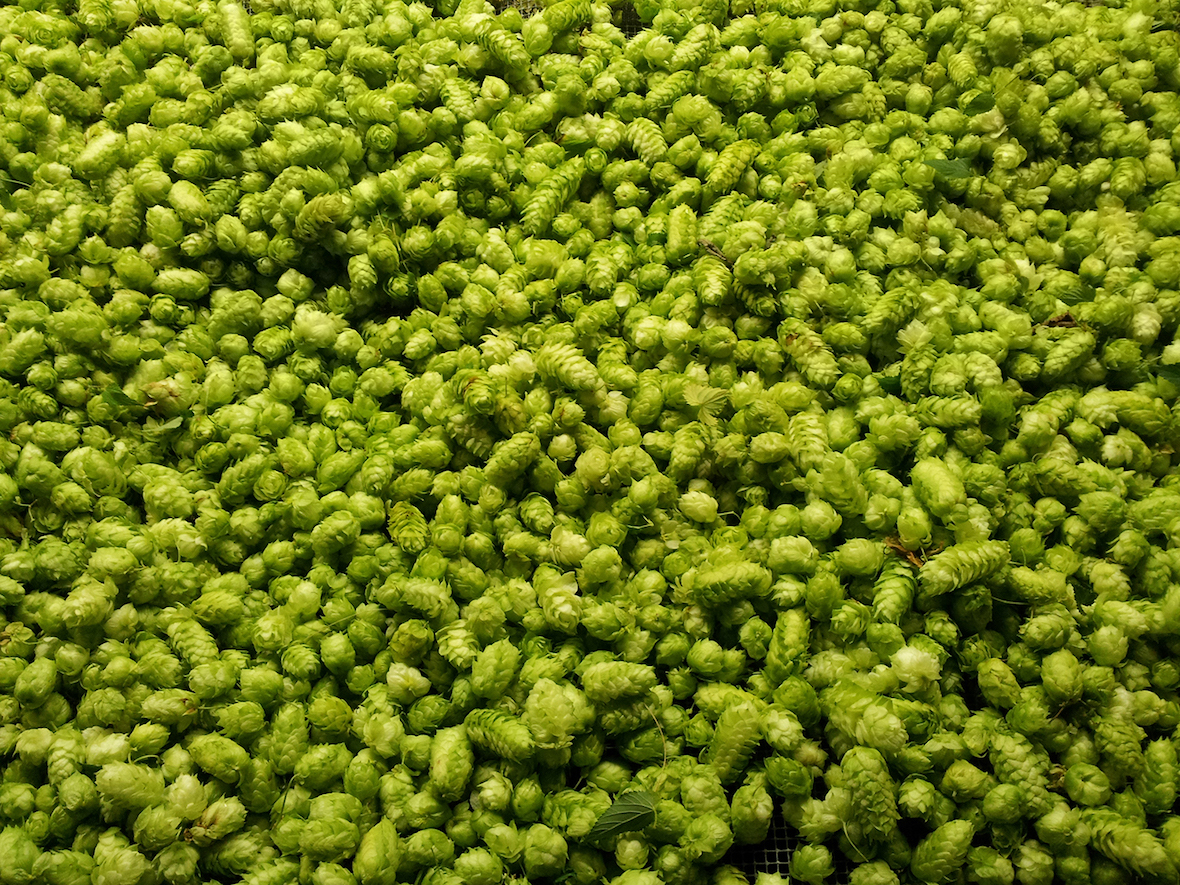Even people who know next to nothing about beer have likely heard of hops. It’s a word you can throw around while sipping: “This tastes pretty hoppy,” someone might say while drinking an IPA. They wouldn’t be wrong, but chances are good they couldn’t pick a hop out of a lineup. On the other end of the spectrum are Laura Ten Eyck and Dietrich Gehring, the married farmers at Indian Ladder in Altamont, New York. They recently co-wrote The Hop Grower’s Handbook: The Essential Guide for Sustainable, Small-Scale Production for Home Brewers—a project borne of their extensive experience with the plant and a need for more specialized understanding of how to grow them in New York State.
They’ve grown hops for hobby brewing since the late 1980s, but about five years ago, Gehring took the operation commercial. “Whether for good or bad, we were successful,” he laughs. The farm now grows two acres of hops, as well as malting barley (another beer-making essential). But it wasn’t always easy. “When we started, there was very little knowledge base,” Gehring says. “Traditionally in New York State, barley and hops had been grown but not commercially for about 100 years. It wasn’t like you had all the support of cooperative extensions [partnerships between academic researchers and producers] or you could go ask an old dude down the road.”
In fact there are numerous differences that make the East Coast less hospitable to hops, chief among them that more rainfall leads to more weeds. “Hops do not like a lot of weed competitors,” says Gehring, and rather than keep the ground bare through the use of herbicides like in the Northwest, Indian Ladder must have ground cover to both avoid mud and maintain a habitat for beneficial insects. They also have limited options for pesticide use: “Not many pesticides, either organic or conventional, are labeled for use in Northeastern states on hops, since there has been no commercial production of hops in this part of the country for a century.” That’s all changed, and Indian Ladder has been at the forefront.
The Farm Brewing Law passed by Governor Andrew Cuomo in 2012 created increased demand for locally grown products and information since, to receive a Farm Brewery license, a brewery would have to use a majority of hops and other ingredients that were grown in New York State. Ever since the law went into effect in 2014, the number of farm distilleries statewide has nearly doubled. This has led to increased demand for both Indian Ladders’ hops and know-how.
Now they’re no longer just imparting knowledge, but brewing their own commercial beer and cider. “When the governor started the farm brewery law, that was kind of the kick in the pants for us,” Gehring says. “It’s like a lot of things with farming: You have to find a value-added avenue in order to make money as a small farm. So with the [apples,] hops and the barley, it made sense to go to the next step and start a brewery and a cidery.” They also took the next step of taking on a partner for the enterprise: Stuart Morris, a lifelong friend of the couple who came with experience in wine and liquor sales.
This past July, the operation opened the Indian Ladder Farmstead Cidery and Brewery on the farm premises—which you can visit Thursday through Sunday—and now are using nearly everything they grow themselves. There, a farmworker who likely tended to the hops himself will pour you a glass (and can also explain what they are). Among the beers they’ve been cooking up are a farmhouse ale with dandelions, a sour ale aged in merlot barrels, and a strawberry-rhubarb wild ale. Gehring notes that hops are especially sensitive to micronutrients and climate, giving each of their beers a unique terroir.
They’ve also been using their old-dude knowledge in collaborations with breweries like Brooklyn’s Threes Brewing, with whom they made the Daniel Driscoll Pale Ale. In Threes’ head brewer, Greg Doroski, they have found quite a fan. “Stuart and Dietrich are growing some of the best malt and hops coming out of New York State right now—and it comes through in their beers,” he says. “They set an example of what can be done with the right commitment and expertise.”


















